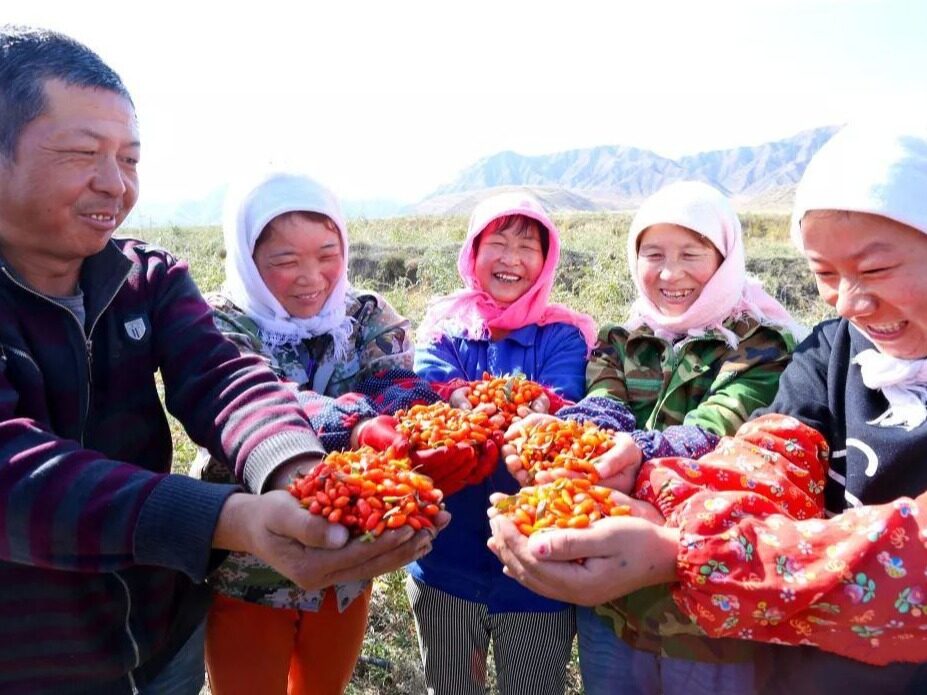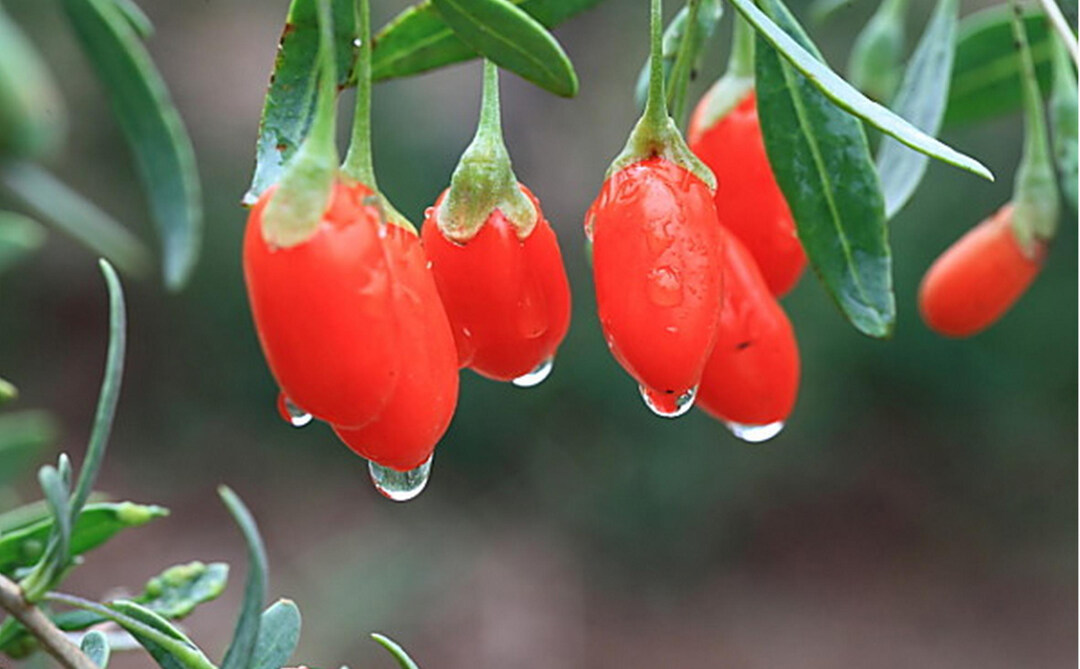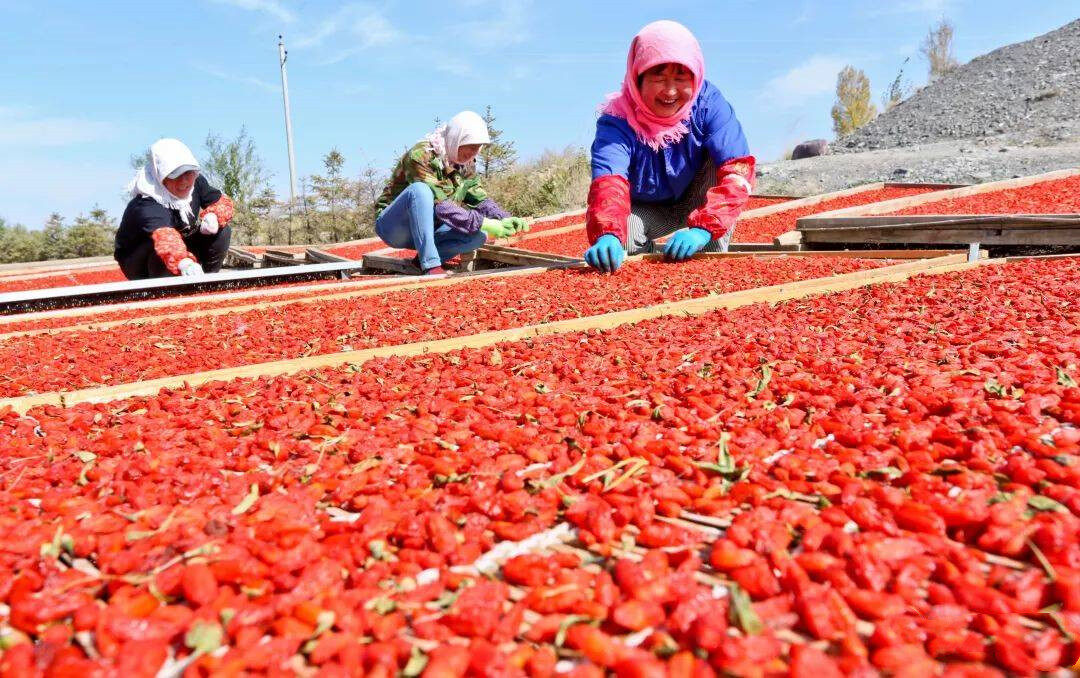- Chinese wolfberry, fruit, root and leaves can be used as medicine. Sweet wolfberry has been famous since the Tang Dynasty

When I read "The Book of Songs", there is a poem: Zhan Zhan Rusi, in Biqiji. Xianyun gentleman, can't help but Lingde. Qi spine is today's wolfberry. It is conceivable that during the Western Zhou Dynasty, people had already started planting or picking wolfberry. But its history lasts for more than a thousand years?

Goji berries have been famous since the Tang Dynasty. Sun Simiao, a well-known medical scientist at the beginning of the Tang Dynasty, described in "Qianjinyifang" that "Ganzhou is true, thick leaves are." Goji berries have been so famous since the Tang Dynasty, how is it now in Ningxia? Think about it thousands of years ago, the wolfberry on the land of Ganzhou might be as famous as the silk, jade, and spices traded on the Silk Road. As for the legend of Ningxia wolfberry, it is probably since the Qing Dynasty. According to historical records, the production area of Chinese wolfberry can be divided into four regions: one is in Zhangye (anciently known as Ganzhou), where the product is called "Golly wolfberry"; the other is in Zhongwei and Zhongning areas of Ningxia, where the product is called "West wolfberry", which is It is now called "Ningxia Lycium barbarum"; the third is Tianjin area, which is said to have been introduced and developed from Ningxia during the Gengzi reign of the Qing Dynasty, and is called "Tianjin Lycium barbarum". Later, Xinjiang "Guchengzi Lycium barbarum" was also counted as a producing area. In the Qing Dynasty, the Ningxia Plain was the court's granary. Officials frequently traveled between the capital and Ningxia Prefecture. As a local specialty, goji berries were presented to guests, and gradually formed a reputation overwhelming Gan goji berries, which has continued to this day. What followed was the gradual degradation of the Chinese wolfberry varieties. Even in large-scale agricultural development, the original varieties were rejected by farmers in order to broaden the arable land. Now it would be a miracle to find a century-old wolfberry.

Little wolfberry, clear and bright, lasting for thousands of years, it is really a good medicine for prolonging life. The authentic medicinal material of Ganzhou-wolfberry with history. We usually only know to use its fruit. In Chinese medicine, the fruit, root and leaf can be used as medicine:
Lycium barbarum: sweet, flat, nourishing the liver, nourishing the kidney, and nourishing the lungs.
Lycium barbarum leaves: bitter, sweet, cool in nature, tonic, clearing away heat and improving eyesight.
Lycium barbarum root: also known as Digupi, bitter, cold, cooling blood to remove steam, clear lungs and reduce fire.

The texture of goji berries is the same in different places. Li Shizhen wrote that the sweet goji berries are the most widespread: "Hexi and Ganzhou have their seeds as round as cherries, exposed to dryness and small pits, and the stems are also ruddy and luscious, taste like grapes, and can be eaten as fruit. , Different from those elsewhere." When I was young, there were wolfberries everywhere on the deserted beaches of my hometown. In the summer, wolfberries are full of branches, we often pick them and eat them, but we didn't expect to be used as medicine. From a distance, the mature medlar stalks are hanging like red agate beads on the wrist of a little sister, but it is still very difficult to pick one by one from the thorny leaves. Sometimes you can eat while picking it and wait until you get home. There is not much in the pocket. Sometimes it was too annoying, so I grabbed the branches directly and broke them down one by one. It was fun!

At that time, goji berries were all natural and wild, and children used it to relieve their greed. No one would have thought that in recent years, goji berries will become an industry. Red goji berries and black goji berries will continue to be hyped in the market, and the effect of goji berries will be enlarged to omnipotence. It is hoped that people all over the world will use goji berries as a panacea for prolonging life. Yes, come and eat. Even though it has the effect of curing asthenia, nourishing the bones, nourishing the kidneys and nourishing the liver, but not everyone needs it.
Gansu Province is one of the authentic producing areas of Chinese wolfberry. The Chinese wolfberry has been appreciated by Chinese pharmacists for its unique medicinal value. Li Shizhen wrote in "Compendium of Materia Medica": Above, other hills and banks can be used. Later generations will only take the ones from Shaanxi Province, and the ones from Ganzhou are the best products. Today, the wolfberry in Lanzhou, Lingzhou, and Jiuyuan of Shaanxi is a big tree with thick leaves and thick roots. Hexi For those in Ganzhou, their fruit gardens are like cherries, which are violently dried and have small pits. The stems are also ruddy and luscious. They taste like grapes and can be used for fruit food, unlike those elsewhere." Chinese medicine believes that wolfberry has the effects of nourishing liver and kidney, improving eyesight and nourishing blood, and can enhance the body's immunity. For modern people, the most practical effect of wolfberry is anti-fatigue and lowering blood pressure. In addition, wolfberry can protect the liver, lower blood sugar, soften blood vessels, reduce blood cholesterol and triglyceride levels, and have certain effects on patients with fatty liver and diabetes. According to clinical medical verification, wolfberry can also treat chronic renal function Exhaustion.

Little wolfberry, which lasts for thousands of years, is really a good medicine for prolonging life. The world only knows Ningxia wolfberry, but now they don't know that Ganzhou wolfberry is also the most beautiful in the world. Editor/He Yuting
Comment
 Praise
Praise
 Collect
Collect
 Comment
Comment
 Search
Search














Write something~